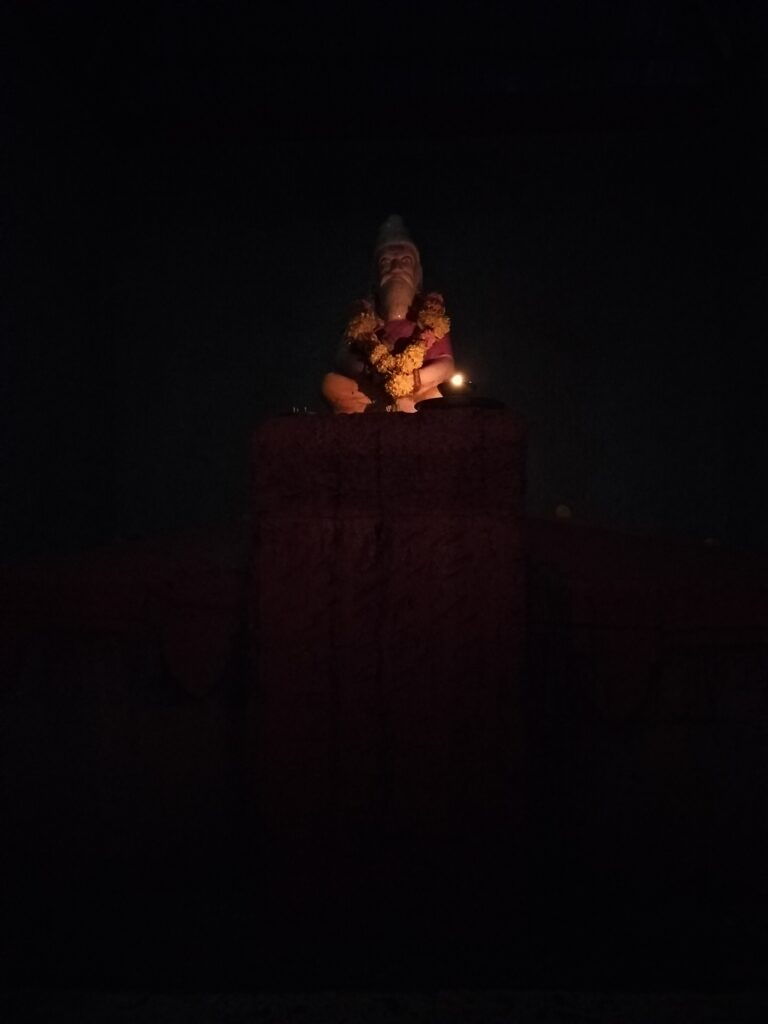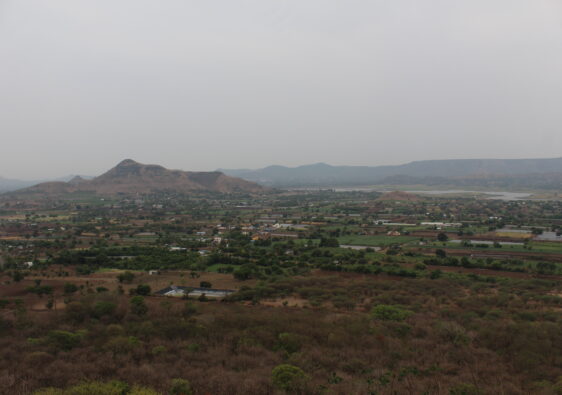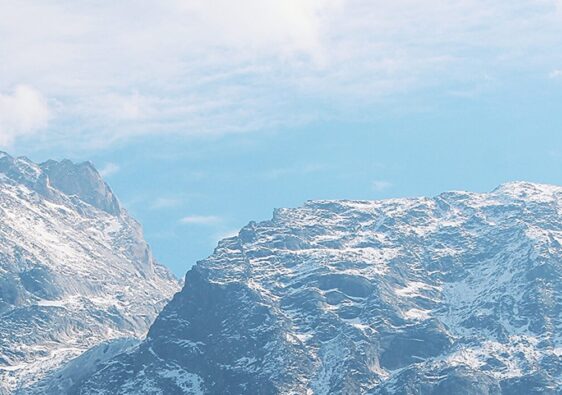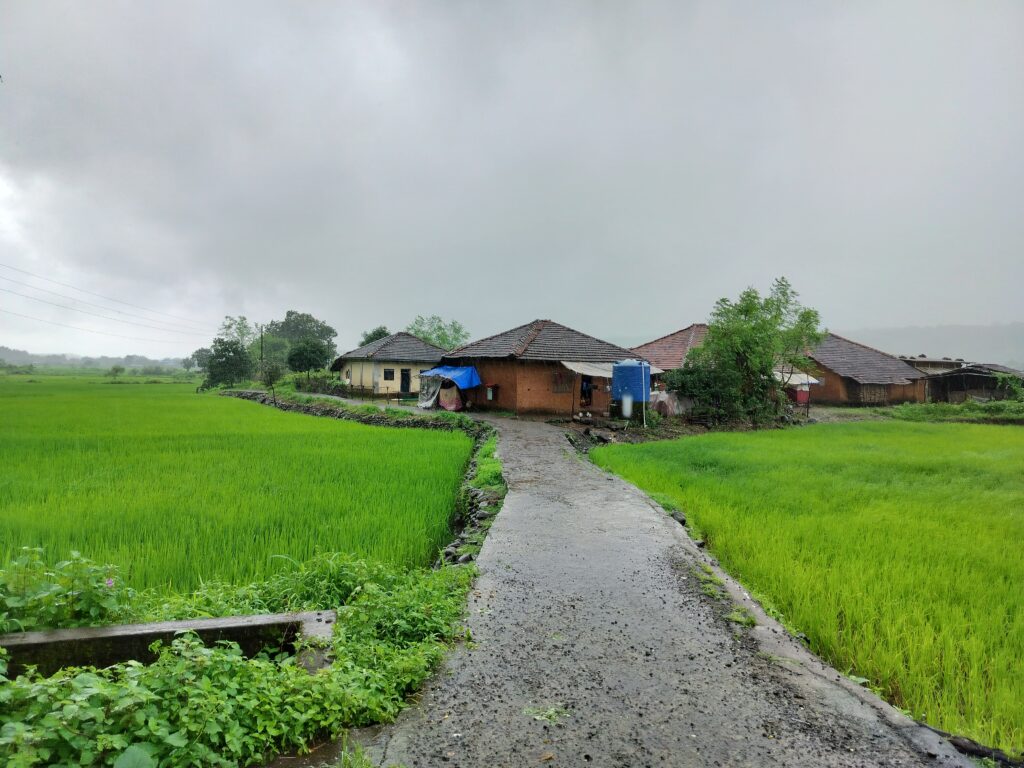

I had read about Dehene Village known as an offbeat monsoon retreat, raw and unexplored, offering opportunities to engage in various traditional experiences. It was Grassroutes which took the initiative of encouraging rural tourism in Dehene. The stunning landscapes, the crispness in the air, the solitude of the hills, the sound of the flowing streams, the simplicity of people and rural life in Dehene offered a serene escape from the chaos of urban existence. The day was finalised, homestay was booked and we were super excited to hit the roads. But inadvertently I booked a stay, a farmhouse, in another village called ‘Veloshi’ on the other side of the hill. At the end of the day, there were no regrets. Dehene itself was beautiful, and getting to explore another breathtaking village, Veloshi, was icing on the cake.
While Mumbai was scorching in heat, this place on its outskirts was drenched in heavy rains. In this blog post, we share with you our memorable experiences of two days spent in the twin villages of Dehene & Veloshi. We travelled without any plans or itinerary and surrendered to what the roads had to offer. Just go and explore – was our motto of this trip.
Foreseeing the rains as predicted in the weather forecast, mounting our luggage on the bike, we left Mumbai (Worli) at 6:30 am. After a dry spell for a month, it rained the previous night and now it seemed the rain would go along with us till Dehene. The ride on the Mumbai-Nashik highway (NH160) was very boring and treacherous due to on-going road widening work in progress. There were many diversions and riding in the potholes in rain was a tricky manoeuvre. The traffic congestion caused by potholes and ongoing work on underpasses and flyovers resulted in heavy traffic flow. This is an important highway connecting Mumbai to Northern Maharashtra and is currently taking double the time for motorists to reach the destination. And all in sight we saw vanishing landscape scenery amidst construction works. This continued till Vasind and Asangaon.
We eagerly wished to leave the highway and hit the country roads. As soon as we entered the Shahapur-Murbad state highway (SH79), we felt an incredible sense of relief. The ride became smooth and scenic after crossing the bridge above the flowing Bhatsa River. Little ahead of the river we left the state highway and continued the ride on the village road till Dolkhamb. From here the actual ride begins in the countryside. The road from Dolkhamb which connects till Ghatghar Dam has some beautiful villages like Sakurli, Dehene, Veloshi & Chonde. We stopped now and then to soak and admire the beautiful views. Small cluster of huts adorned the landscape boasting of lush greenery, waterfalls and mountains. Between Dolkhamb and Veloshi, we halted at a place for some photographs where a stream ran parallel to a road beside a rice plantation. The rice grown here on farms are rain-fed and also irrigated by the streams flowing from the Sahyadris.
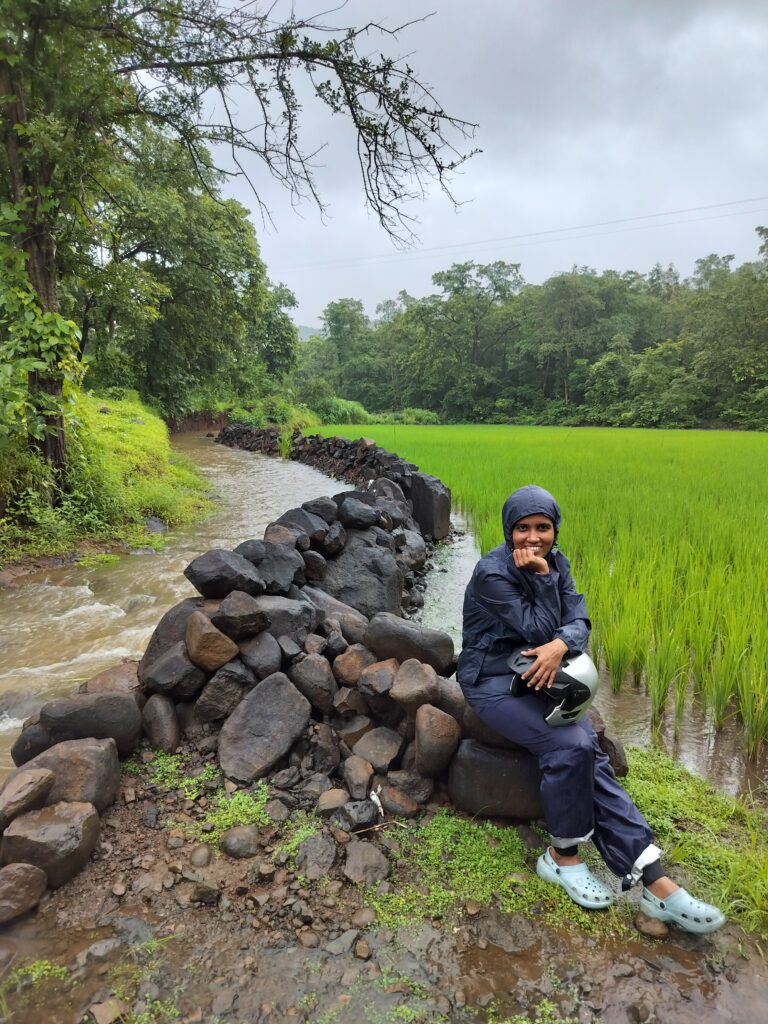
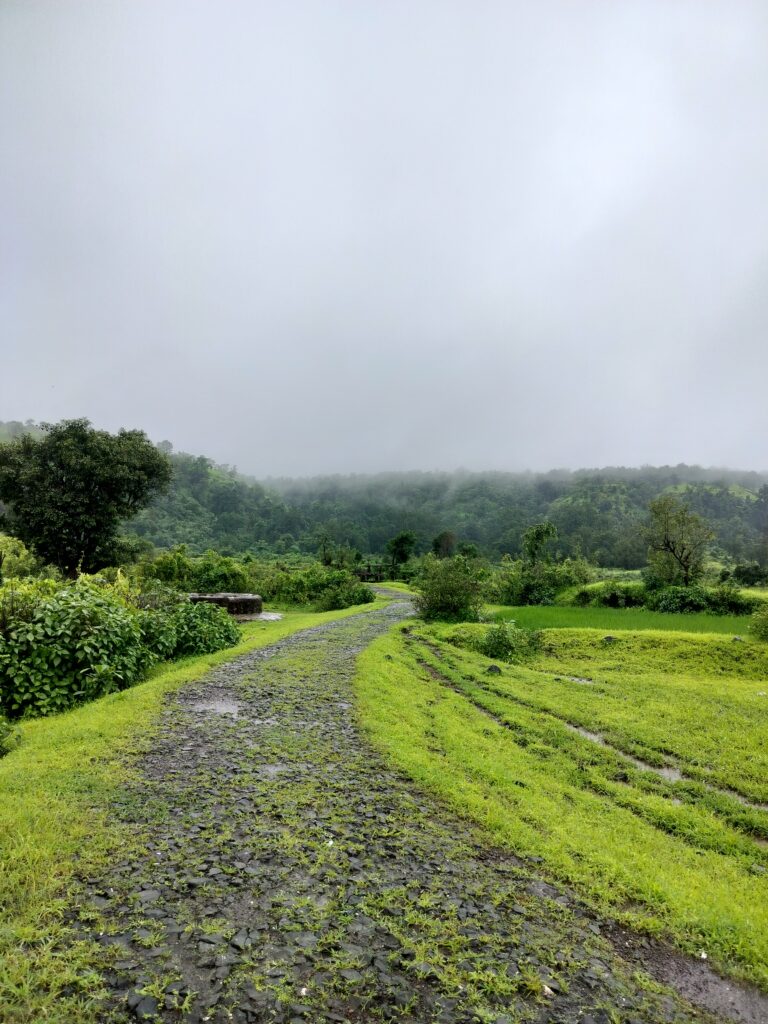
There is one more thing we like about riding on the rural roads. Most of the time the roads are empty or with very less vehicular movement, but after riding some miles there comes a local market which is buzzed with activities. The scene in a local market of a village looks attractive. One can meet all sorts of people there. People with different occupations selling their wares, men and women from nearby villages doing their essential shopping, school children waiting for the state transport bus to arrive, shared jeep drivers calling out for the passengers, vegetable and fruit vendors adding vibrance to the scene, a sugarcane shop makes known its presence through the bell emiting sound from the crusher, cloth and garment shops competing with one another, elderly people discussing politics in a tea shop and several hawkers selling various commodities. The local markets present a rural glimpse of life in so many colours and fill us with a sense of belonging to India whose soul lies in villages. On our road trips we love to welcome these moments and try to stop for a quick snack or buy some necessary goods or simply take a break.
Coming back to the ride, we reached our homestay – Zidan Farmhouse in Veloshi at 11:30 am. The owner Mr. Khizer Qadri has designed the property to provide budgeted accommodations with meals catering only to groups. It was very kind of him to allow us to stay in his farmhouse on weekends. The property is located in a very scenic environment.
Completely drenched, water dripping from the raincoat, unmounting our luggage we relaxed ourselves. To reach a new place and smell the scent of the earth was a very pleasant feeling. New explorations, new people awaited us in Veloshi and Dehene.
The caretaker Ramesh who has a home in Virar lives on the farmhouse most of the time, going to his family mostly during festivals and special occasions. He is a good cook and served us a savory chicken curry with bhakri, dal and rice. It rained heavily as we enjoyed the meal. He shared some stories from here and there which we listened to unenthusiastically. The weather was beckoning outside. And there was no time for stories.
With no mobile network and wifi connectivity, I felt at peace and harmonious with the surroundings. The rain was here to stay for the next few days. There was a cosy feeling of being inside looking out at the rain, safe and warm. As I sat by the window, the sound of the raindrops falling on the roof left me introspecting. Raindrops trickled down the mango leaves and a pair of Indian Robin sat on its stem close to each other to keep themselves warm. Possibly waiting for the rain to pass. The world was transformed outside. The sky was painted in shades of grey. Its muted colour reflected on the glistening road. Trees swayed in the gentle breeze. The window was blurred with raindrops gliding on it. I could see a waterfall on a distant hill. It looked like a silver tear falling on the ageing face of the mountain.
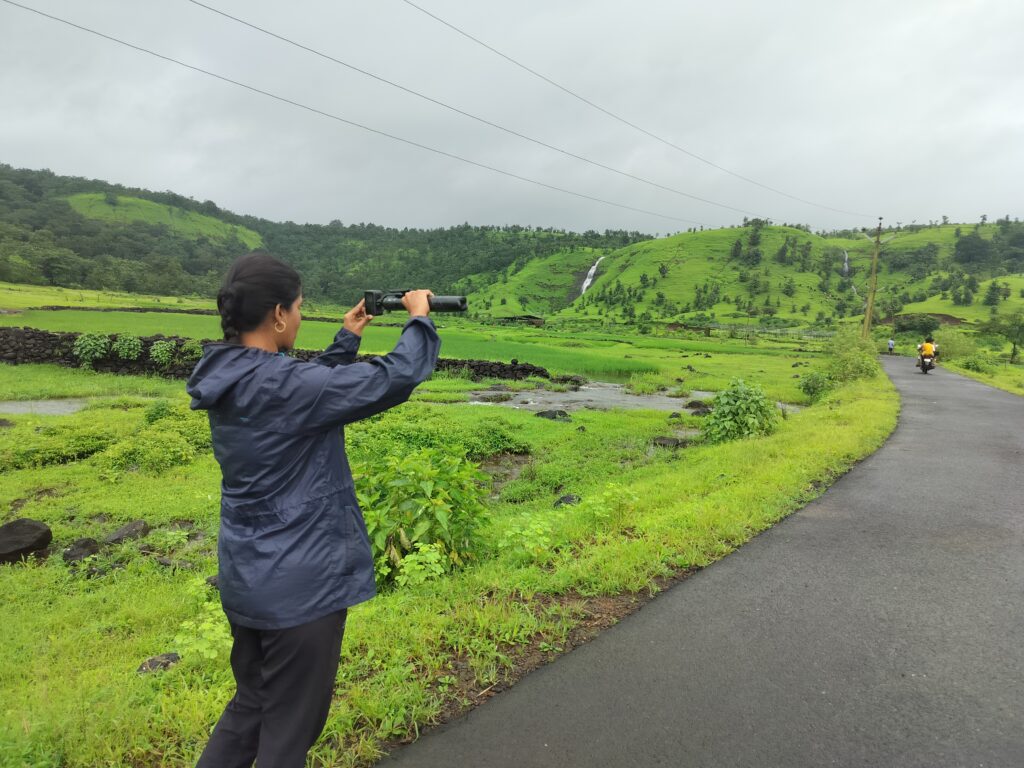
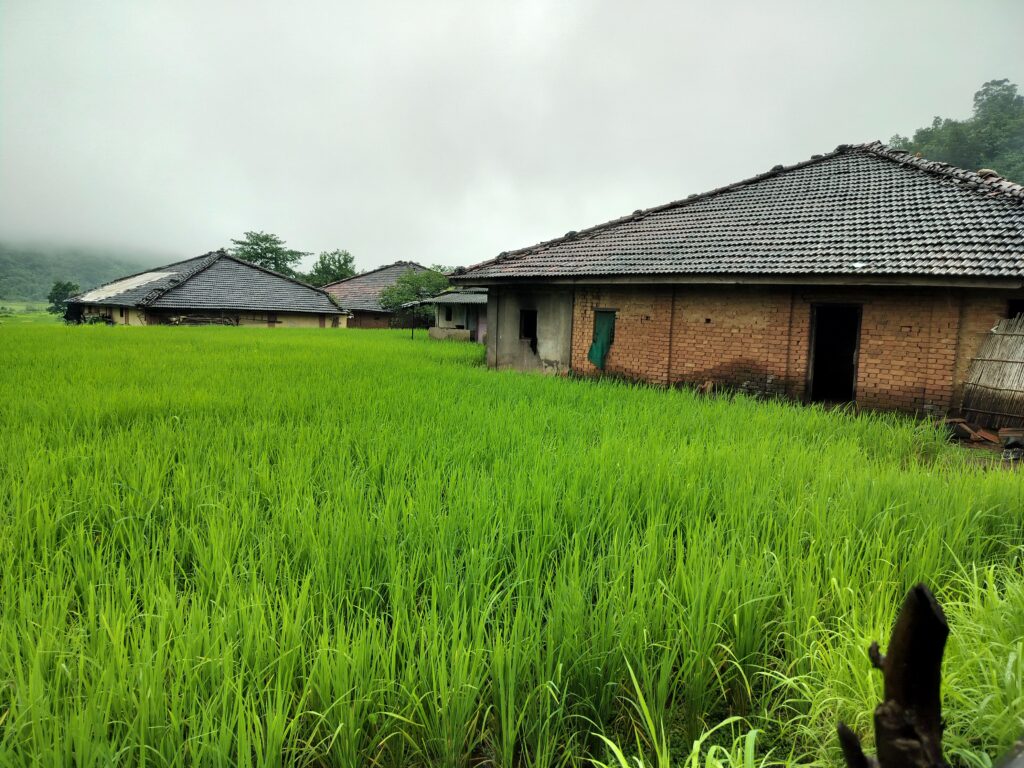
So how did we spend the rest of our day in Veloshi? By embracing the rain outside and enjoying it.
The village was completely devoid of tourists and entirely our own to explore. Basically there is nothing to do or see in Veloshi. No shops, no eateries, no vehicles, no commotion. This place is for relaxation, for conversations with yourself or with any passerby you meet. There are streams flowing, waterfalls plunging, cattles grazing, farmers working, birds singing. Such places are rare to find where you are in unison with nature.
Who doesn’t like being surrounded with nature? Veloshi is blessed with an abundance of natural beauty in monsoon. It is hidden beneath the hills beside a river winding its way through lush green rice fields. The landscape came alive with monsoon flowers dotting the roadside with ‘Silver Cockscomb’ (kurdu) standing out of a field of mixed flowers. Bees and butterflies buzzed among them.

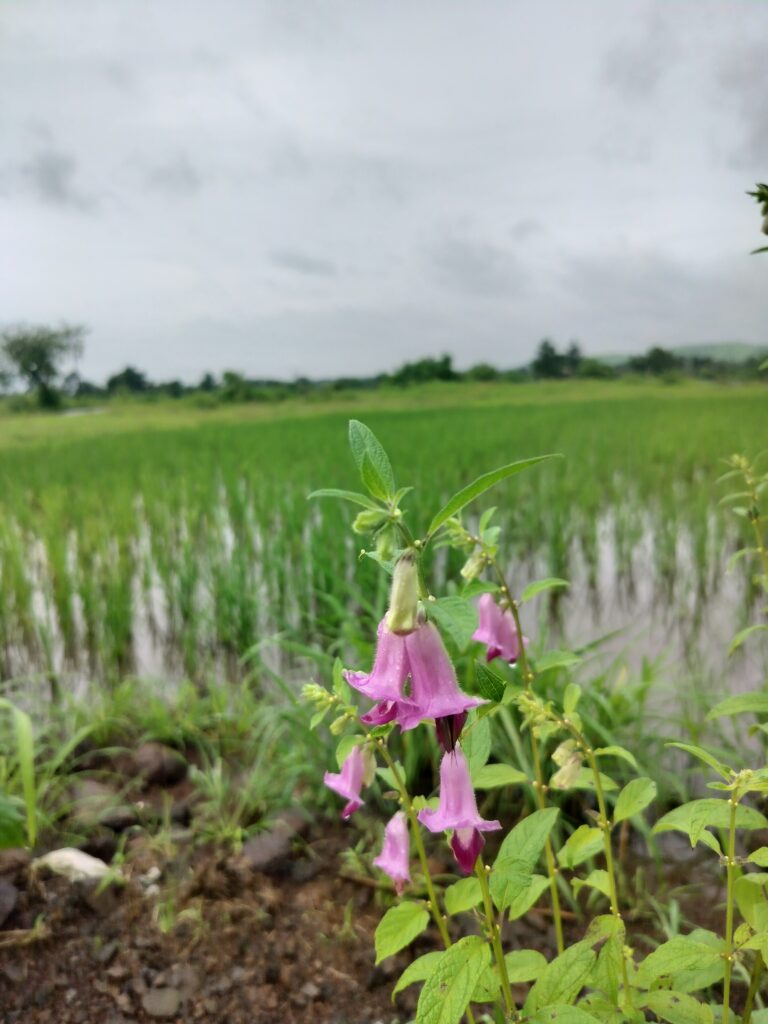
The views of the Sahyadri ranges lining the horizon was admirable. The clouds rolled over them and stopped. And when they moved, glimpses of silvery streaks of gushing waterfalls astounded us. Because not one or two but numerous waterfalls came roaring down the hills. Myriad streams formed by them slithered through the village and joined the river on its ever flowing journey.
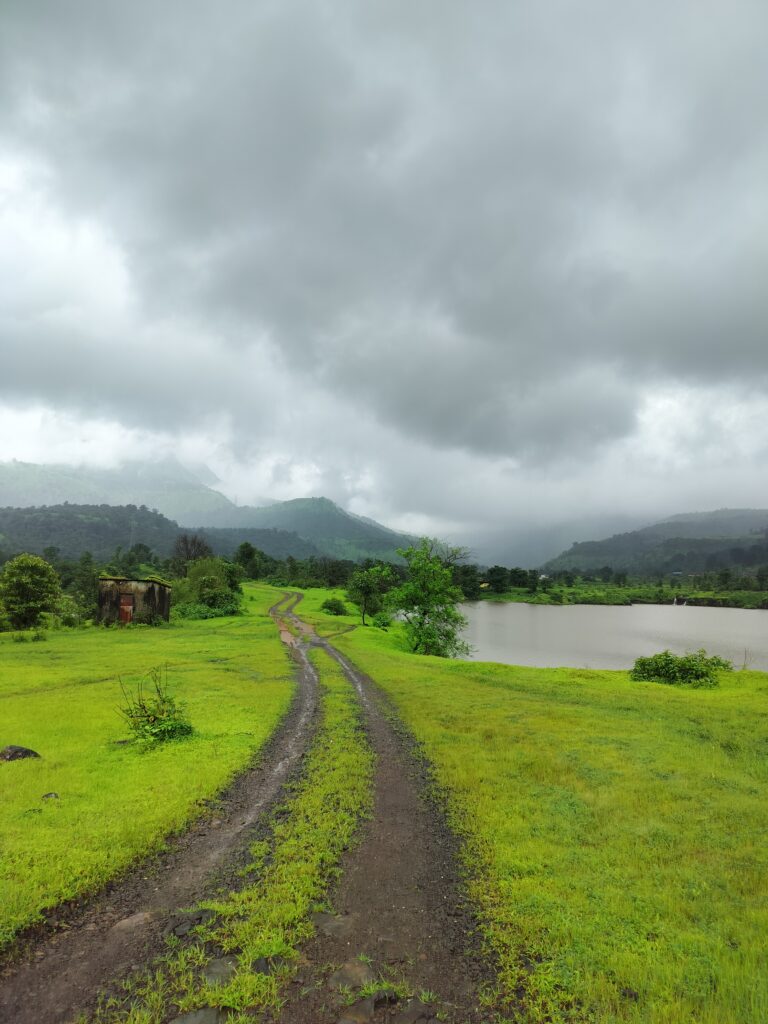

Some distance away, we heard a roar of water pattering against the rocks. The roar from the waterfall was very fierce and loud. It fell with such force that it created a lot of mist and deafening sound. We walked towards it mindfully putting our steps between slippery rocks and lush grasses.
And whoa, that was huge! It must have rained very heavily in the hills. The water was all muddy and the flow was so rapid that it looked as if it was in a rush to meet the river. To get a photograph of the waterfall, we had to cross the stream formed by the gushing fall. But the current was strong. It could sweep us along. Although we missed capturing it in lens, the experience of standing at the base of a roaring waterfall through the mist of the rain was calming and adventurous. And the surrounding landscape was a tapestry of vibrant colours, with wildflowers blooming in every corner. It was a surreal experience of being one with nature.

We walked further down the hills towards the neighbouring adivasi pada which was inhabited by tribals living in about 35 small hamlets scattered one to three miles apart. The first pada was Veloshi, the main village consisting of a primary school with a mix of pucca & kutcha houses. The other two padas were Vaitagwadi & Sarkarwadi which were more primitive and backward. Paddy fields were few and far between. Walking through the water soaked soil we were subject to stares from villagers. Some stood at their door giving a curious look. Some welcomed us with smiles. Children and women, shy to face the camera, ran inside their huts. Sitting at the door a girl child was receiving her first lessons of rice pounding from her mother. A woman pumped water from a hand pump into the pot. “Lay vel lagat paani yayla”, (It takes time for water to come) she says, continuing pumping.
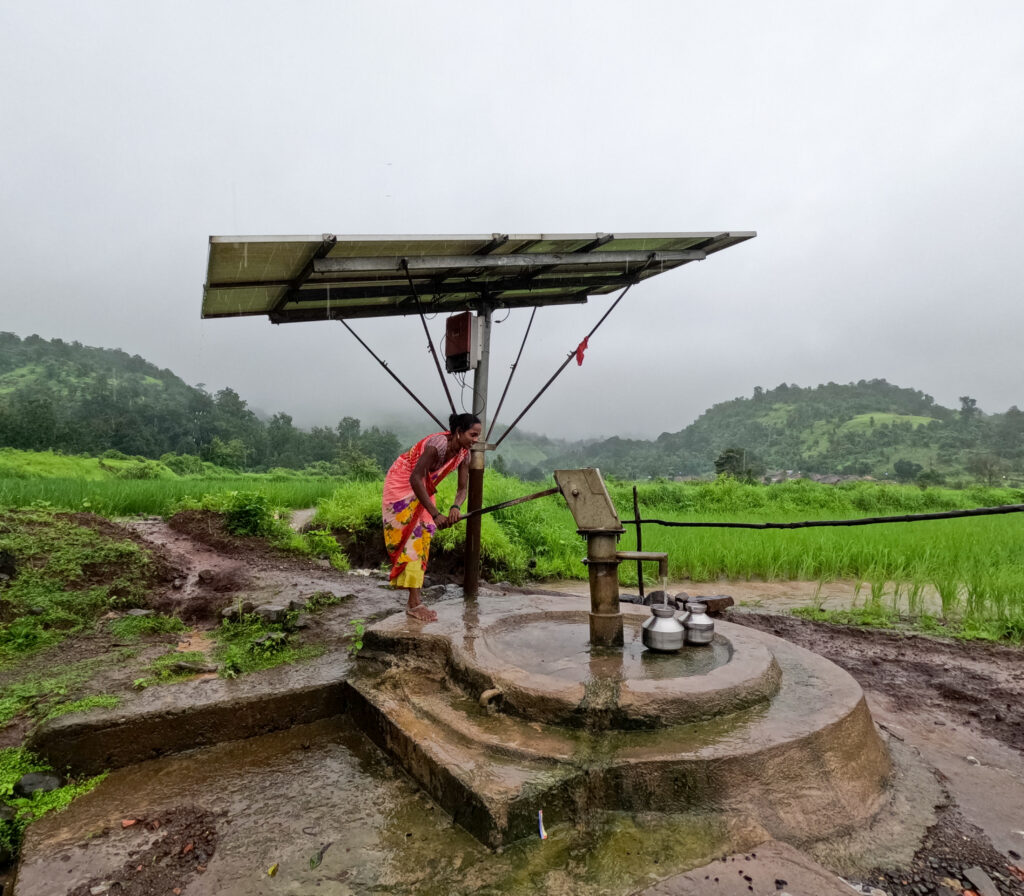
Their houses were simple and made of natural materials. A typical tribal house had a courtyard in front of the house, a place to store firewood and foodgrains, a shed for cattles on the outer part, and a small chulha kitchen in the interior. Some houses had a back door which opened to a paddy field. The hut walls were made of bamboo and reeds plastered with a binding mixture of cow dung and mud.
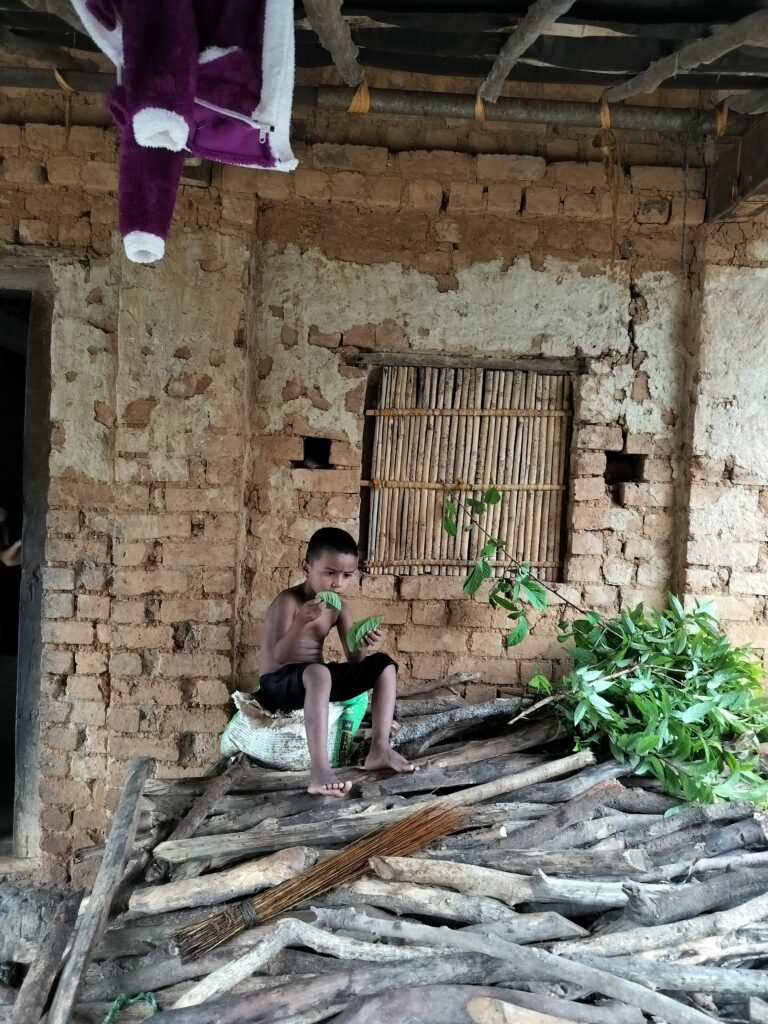

If you observe you will understand that the forest, hill, river, animals… are all intrinsic parts of the tribe’s house, habitat and culture. The streams, land, plants give food and medicine. Farm, forest, river are work places, which give sustenance.
“Since the rain has stopped, we should go back and take some photographs of the waterfall”, Steffe had a strong desire to see the waterfall again. I happily agree “Sure, let’s go before it gets dark”,
We walked back hoping the rain wouldn’t hinder our shots. The view was totally different from what we saw 2 hours ago. Earlier the waterfall was roaring with a maddening sound while falling with a strong force. The water was all brown and muddy. It was impossible to cross the stream. And now, the water turned milky white and its sound was relaxing. We easily crossed the stream and took photographs to our content and sat with our feet in the small puddle formed soaking in the views. Truly, happiness comes in rushes. Just go with the flow.

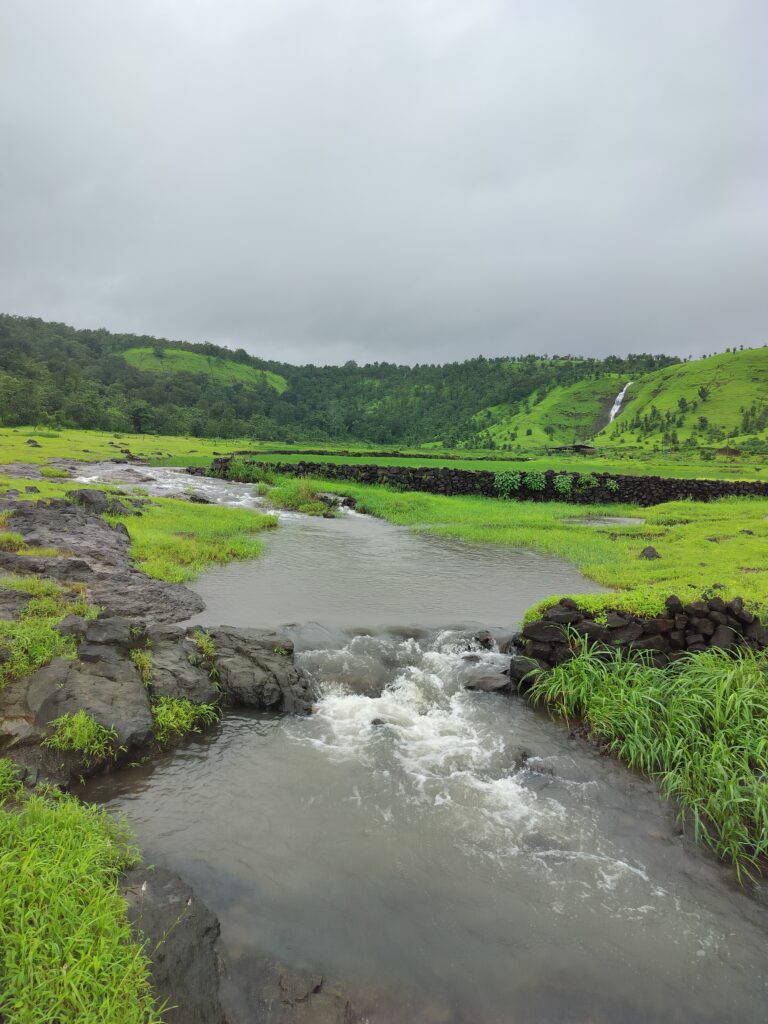
The day in Veloshi ended after spending some pleasant time with nature. We enjoyed the rains, the streams, the walk, the river, the village. Every small moment brought peace within.
The night creeped in. Food was being prepared. In the verandah, we waited in the hope for the mobile signal to appear so that we could inform home that we reached and were safe. And when it did show, we took turns calling standing at one place, unmoved. In the darkness of the night, a dozen fireflies on the trees were flashing their flickering lights. These magical messengers displayed hope in the midst of rain. The excitement turned towards Dehene tomorrow.
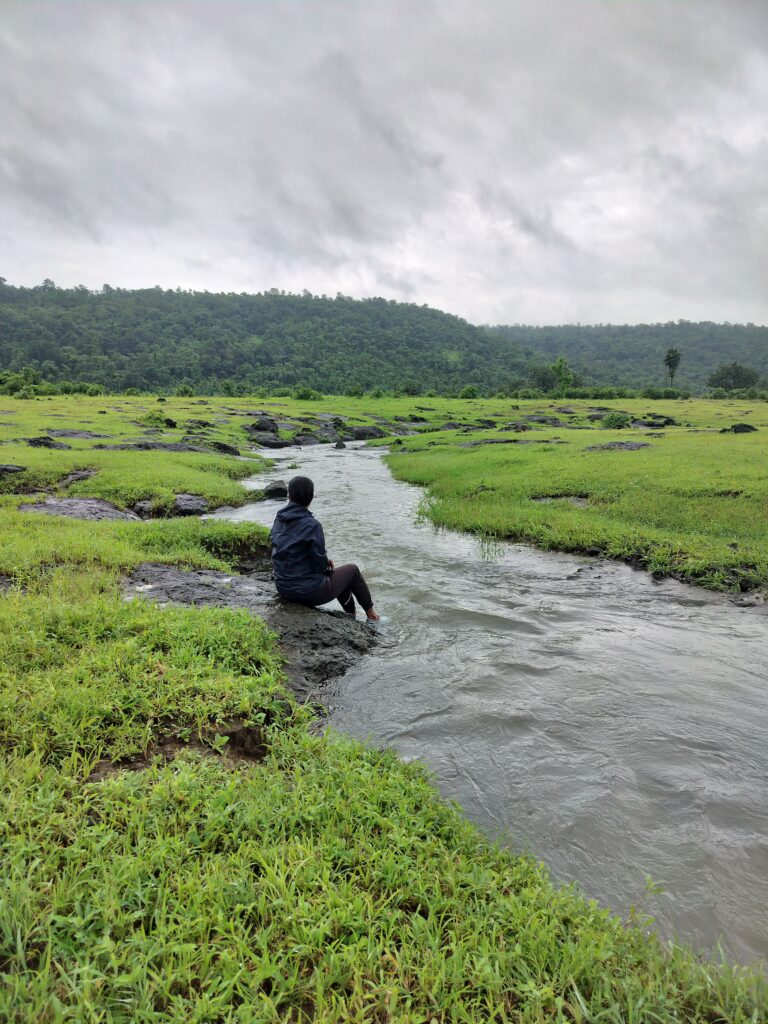
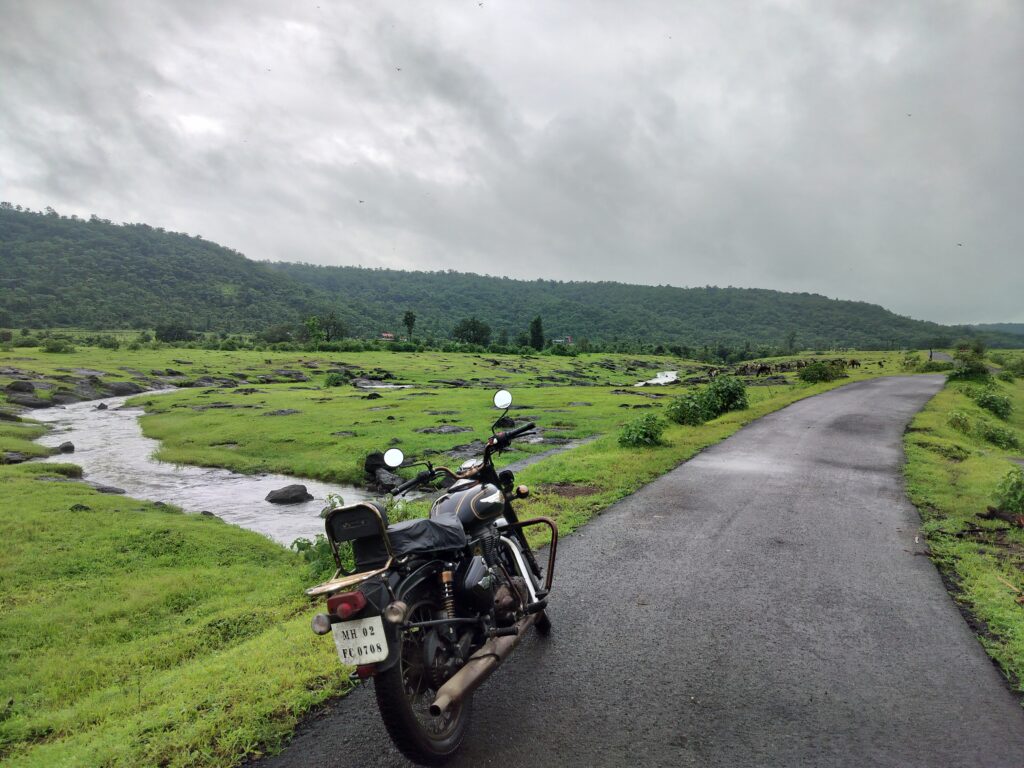
Dehene was 10 kms from Veloshi. It rained the entire night but the morning scene looked a bit sunny, albeit for a while. We stopped the bike on the roadside near a stream which flowed peacefully between flowering banks and grasses. The buffalos waded across the shallow stream and walked in a straight line followed by the cowherd moving towards the pasture land. A lone herdsman stood with his sheep on the hillside. Little ahead near another stream, an old man covering himself with ghongta (plastic rain cover) sat patiently fishing.
“Kutun alat?”(Where you come from), he asks, steadily holding the rod.
“Mumbai” I say as we carefully step down the slippery rocks.
We stand at the other side of the stream. He is sitting on a rock, perfectly poised.
“Kadhi pasun baslyat, mase bhetle ki nahi?”(Since when are you sitting, did you catch any fish?), I speak loudly so that he hears.
“Atach alo, thoda vel jhala, paani la pravah nahi, bhetel ki. ”(Just came a while ago, there is no flow, but will surely get some catch). Lifting the rod he shows us a dragonfly tied as bait to the gal (fishing hook) to lure the fish in the murky waters.
“Kuta jata firayla pavsat?” (Where do you go in the rain?) he asks, putting one hand in a carry bag to remove something.
“Dehene” I say, adjusting the camera lens.
“Chaan, hey baga.” (Good, see this) he shows us a caught fish which will be cooked in a vegetable gravy. He ties the fish to the hook and allows me to take his photo.
“Dhanyawad, nigto aata.” (Thank you, we shall leave now)
“Samabalun jaa, paus khup ahe” (Go safely, it’s raining a lot)

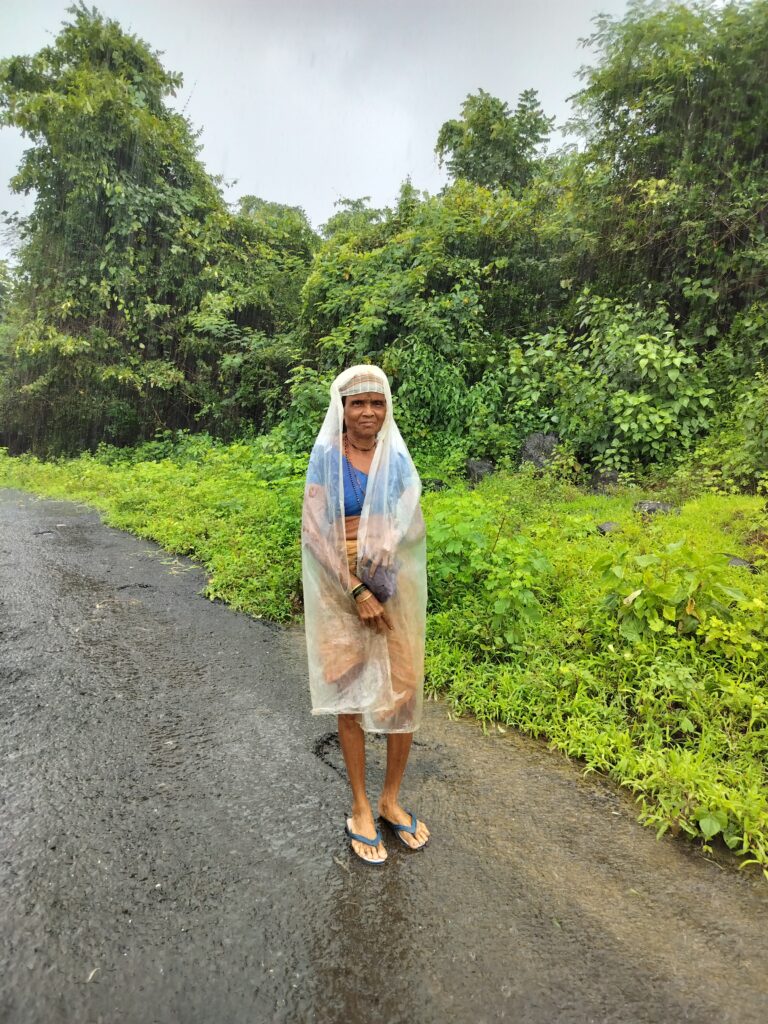
The rain was not incessant but kept falling in intervals. We were reaching Dehene. A cluster of houses settled beneath the tall Sahyadri ranges. A boy rode a bicycle effortlessly on the steep road.
“Kute gaav tuja?” (Where is your village?), I ask, slowing down the bike matching the pace of his cycle.
“Tikda” (That way) he says shyly, pointing towards a settlement.
“Naveen cycle ghetli?” (Is this your new bicycle?). We both stop.
“Nay, shala ne dili” (No, it’s a gift from school)
“Aye, tu mala deshil ka chalvayla?” (Will you give me a ride on your bicycle?), Steffe jumps in excitedly.
“Deu nakos, tila yet nahi chalvayla” (Don’t give, she doesn’t know to ride), I joke to which he smiles.
He alights and gives the bicycle happily. His name is Yogesh, studying in 8th standard in the marathi medium school in Dehene. For further schooling they have to travel 10 kms to Dolkhamb. Steffe is enjoying the bicycle ride in the village with the mountain views. We both waited for her. He tells me to take a ride too. Such a selfless and humble boy.
These little conversations mean a lot. On either side there are no attachments, no judgements. You meet new people, talk to them, create familiarities without expectations and then move on spreading happiness.
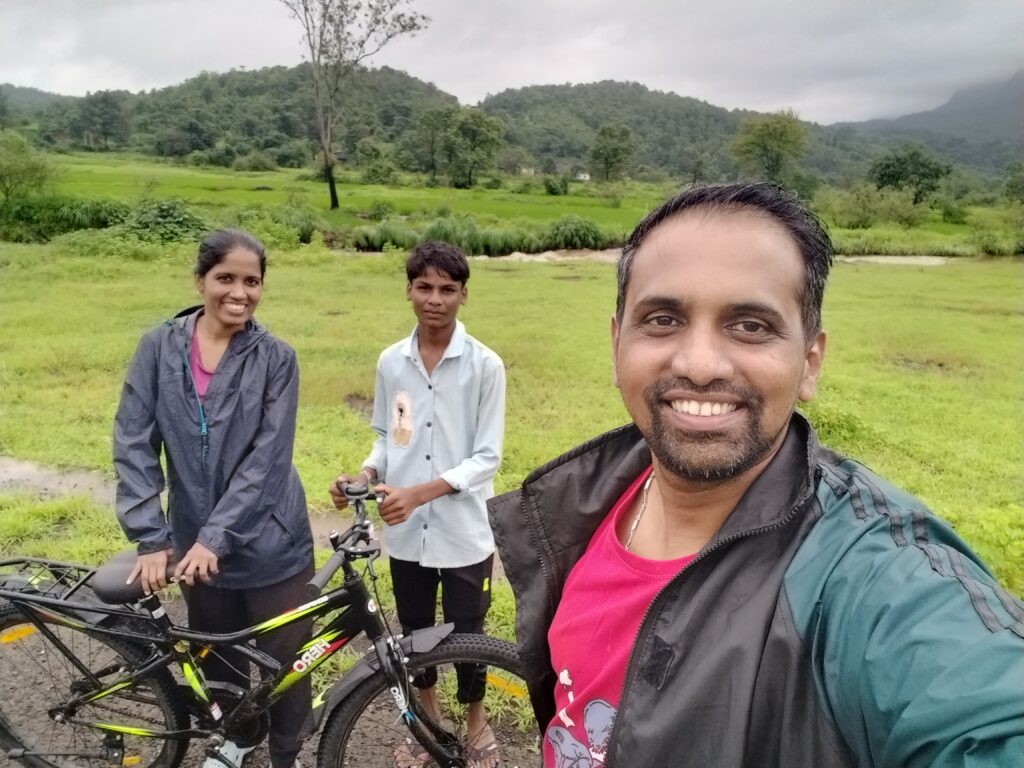

A bus was parked on the ground next to the temple. That meant a group was already here. And why not, Dehene is not just a village to explore but it offers various trekking opportunities. Treks like Ajobagad, Karoli Valley & Sandhan Valley can be done making Dehene as base. After descending Sandhan Valley, trekkers stop for rest at Dehene. Ratangad and Bhandardara lie just beyond the mountains.
Dehene is the main village. The tribal settlements are further inside close to the forest at the base of the hills. The houses in Dehene are settled and spacious with each having a courtyard of their own. People looked relaxed having done their morning chores. As in Veloshi, they did not stare at strangers as they were accustomed to tourists. Dehene is not crowded like any other weekend spot in monsoon. Only people who love offbeat travels like trekking, camping, stargazing, traditional and cultural participation approach Dehene for a peaceful respite.
Even researchers and scholars studying sociology or anthropology visit Dehene and stay in the village for weeks, says Dashrath Patekar, who is our annadata (food provider) for today’s lunch. He was the first person we met. He was already catering to a group of 40 people who had gone trekking to the Karoli Valley. Yes, the group from the parked bus. He was very appreciative of Grassroutes and their efforts to uplift rural communities through engaging urbanites in experiential tourism. Since Covid pandemic struck, their 10 year long association with Grassroutes has been minimised due to various reasons. A handful of people like him host tourists by providing stay and food in their houses. They also have experienced local guides to take you on treks. On request, Dashrath made an arrangement for a guide who will be with us till the evening. We needed a guide who could take us to every nook and corner of the village and share some insights about the place. We waited for him at Dashrath’s house.
A skinny man with short hair stood in the courtyard. He wore a white shirt and short pant with a towel wrapped around his neck and carried an umbrella on his shoulders. He placed a tobacco between his cheek and gum and looked for his new guest. Dashrath quickly introduced us to Deepak Patekar – our guide. We discussed our plans for the day with Deepak and set out on the exploration of the village.
We were walking towards Chinchwadi – a primitive adivasi hamlet of Ma-Thakur tribes (also known as Thakkars) nestled in the foothills of the Sahyadris in Dehene. The Thakkars have been living in the forests and hills for ages. Their life is intertwined with the forest not only from a livelihood point of view, but also due to their belief system about sacred nature. It is difficult to make them inseparable from the forests and land, hence forest plays a significant role in their life. The tribes here still make weapons for hunting wild animals.

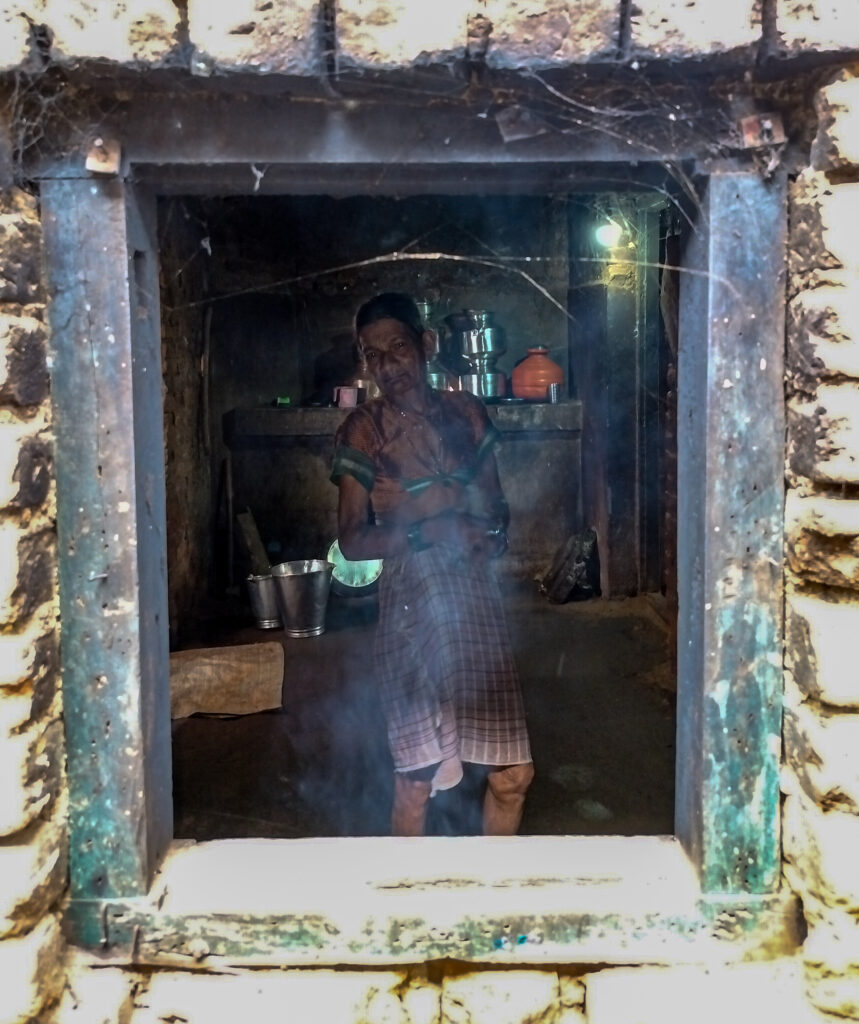
Deepak shared some useful information about medicinal plants and trees. He had a profound knowledge about folklore & mythological tales related to the village traditions. He introduced us to a wild plant ‘takla’ (cassia tora). The Thakkar tribal community eat takla by cooking the leaves during the monsoon season. The seeds with many uses are taken out from the shell, says Deepak, and sold by the tribals. When powdered, the seeds taste like coffee.
A bunch of bright yellow and red coloured flowers catches our attention. This is known as ‘Kal-lavi’ (gloriosa superba / glory lily). The entire plant is poisonous, especially the roots. But the poison does not affect the animals. He tells us that the flower has importance during religious rituals. In the tribal areas of Thane district the flower is worshipped as Goddess Gauri during Ganesh Puja. Deepak’s eyes light up as he tells us about the various cultures and art forms of ancestors, but his tone soon turns wistful as he admits that many of these are now all but lost. Modern thought is influencing the young generation.
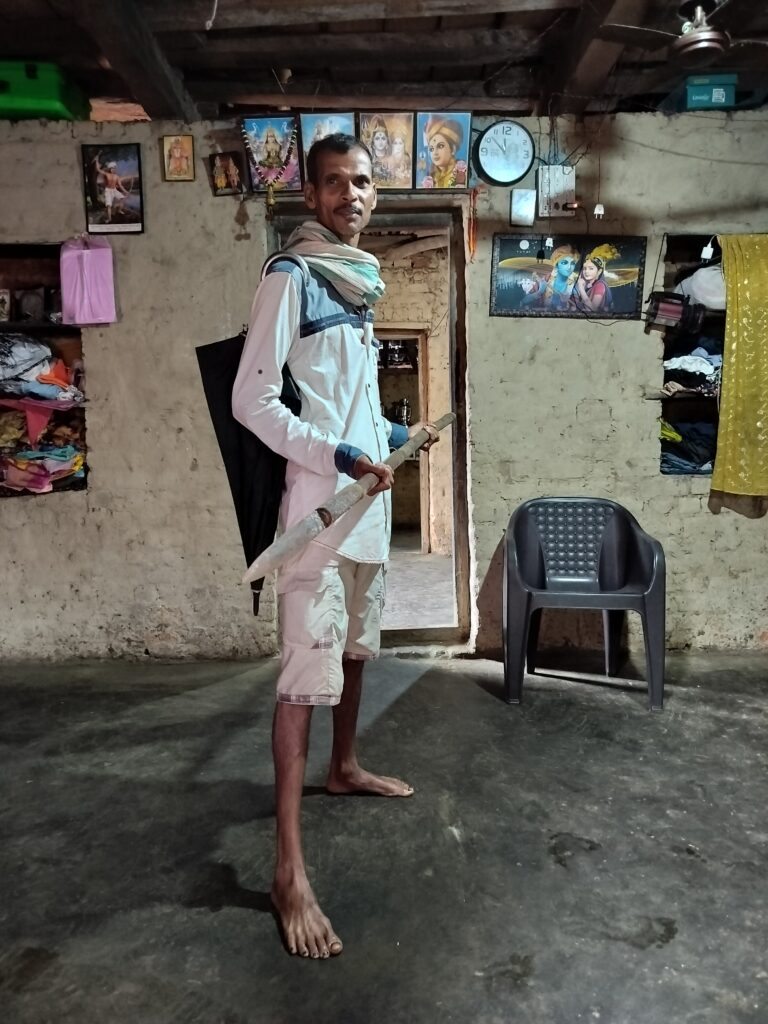
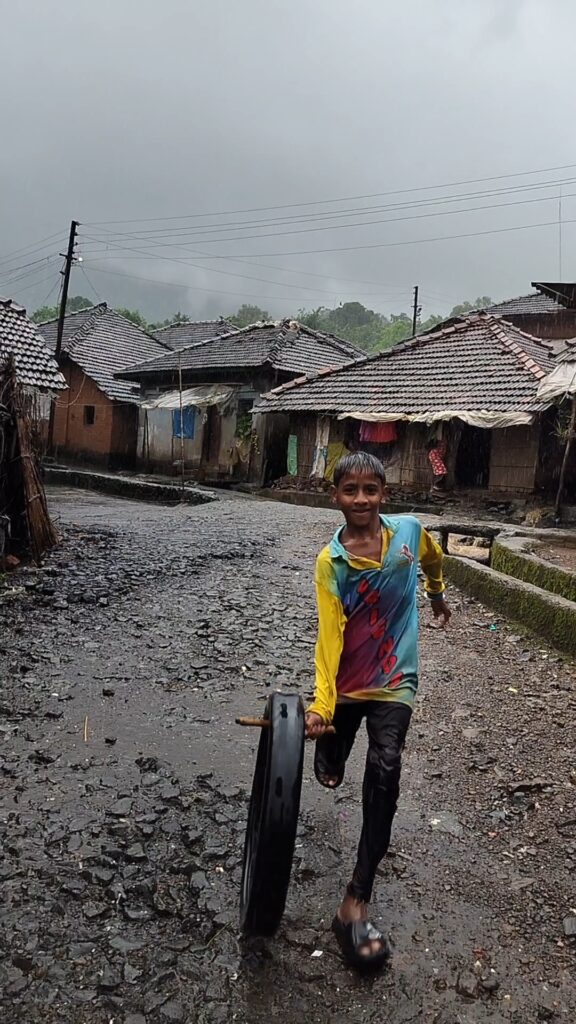
We were really enjoying this walk. He has knowledge beyond books and shared many other pieces of useful information. It rained extremely heavily when we reached Chinchwadi. We took shelter beneath a house made of thatched roof of bamboo and leaves. A tribal woman invited us into her home. A new member was born in her house. A calf which was just one day old. She brought the calf out from the shed to show us. Her love for the calf was abounding. Deepak explained to us about the daily life of the Ma-thakur tribes. Their occupation and hardships. These people may belong to the most backward section of the society but are very rich at heart. The woman offered us tea. When people meet formally or informally, it is practice to serve tea, says Deepak.
Their hospitality towards us was a reflection of simplicity that can be only achieved by living in harmony with nature. Despite facing several challenges such as limited access to healthcare and education, the tribals have managed to maintain their unique way of life and have much to teach us about sustainable livelihood.


We came back to Dehene for lunch. Food was not ready. Deepak invites us to see his house. The entrance leads to angan (courtyard). From the angan, one can access different parts of his house, such as the living room with two cots, a centre space which leads to the kitchen, cattle shed and a small room which has a chulha and a sewing machine. A door from this room leads to the backyard which has a small garden and a toilet. Deepak’s mother welcomed us in. A hen ran helter-skelter with her chick’s all over the house. Deepak’s wife was altering blouses on the machine. His school going son Sachin stood near the window in the cattle shed watching cartoons on mobile. This was the only place in the house with a mobile network. The kitchen was very neatly organised. Sitting on the floor plastered with cow dung felt cool. We had a good time talking with Deepak’s family. Even his son left watching cartoons and joined us listening attentively to stories his grandmother was sharing. Stories about festivals and food and traditions. Deepak was very critical about city life and its vanishing humanity. Humanity has lost its way in the cities, he says. Some conversations with the right people are priceless. And this was one of them.

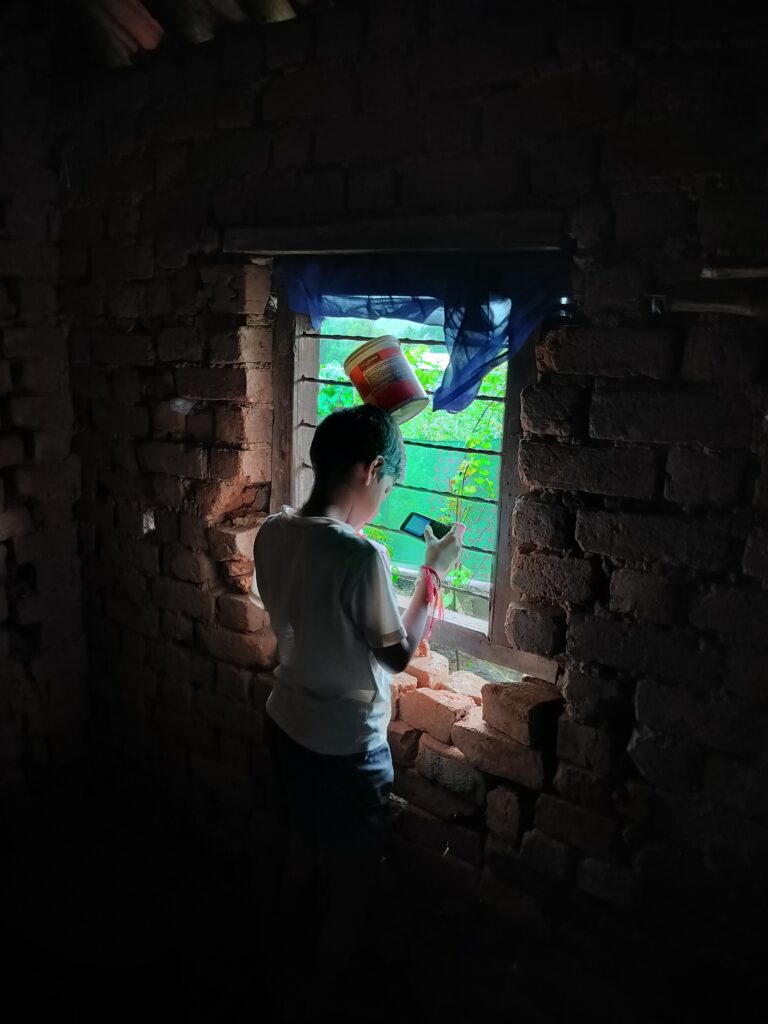
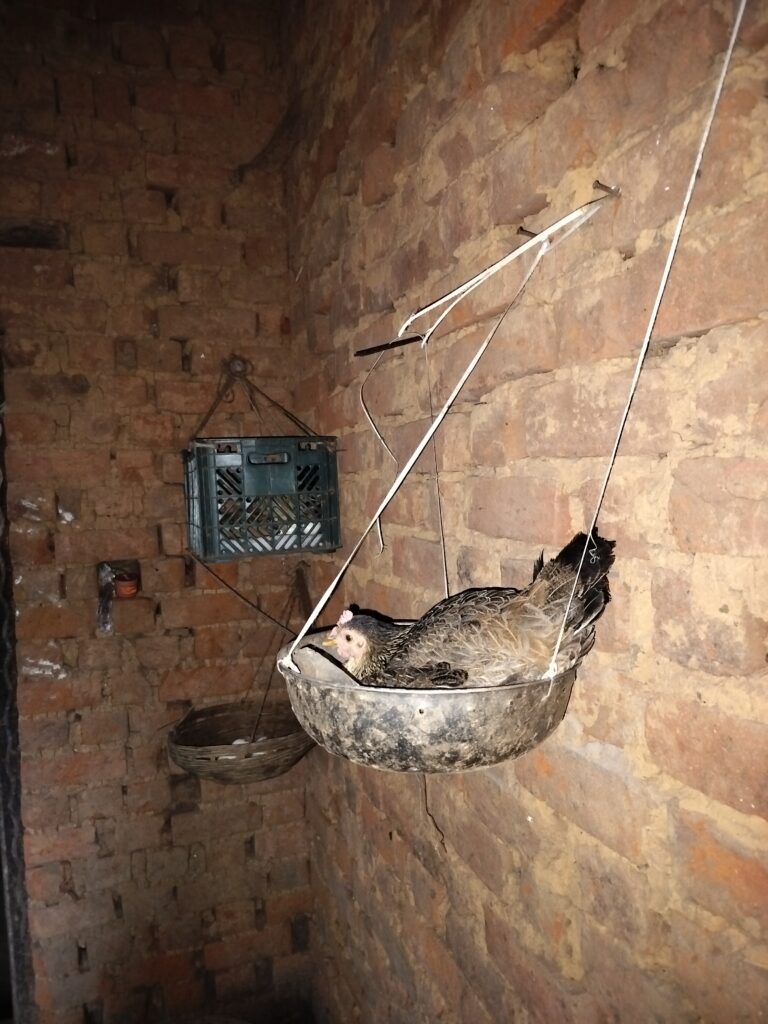
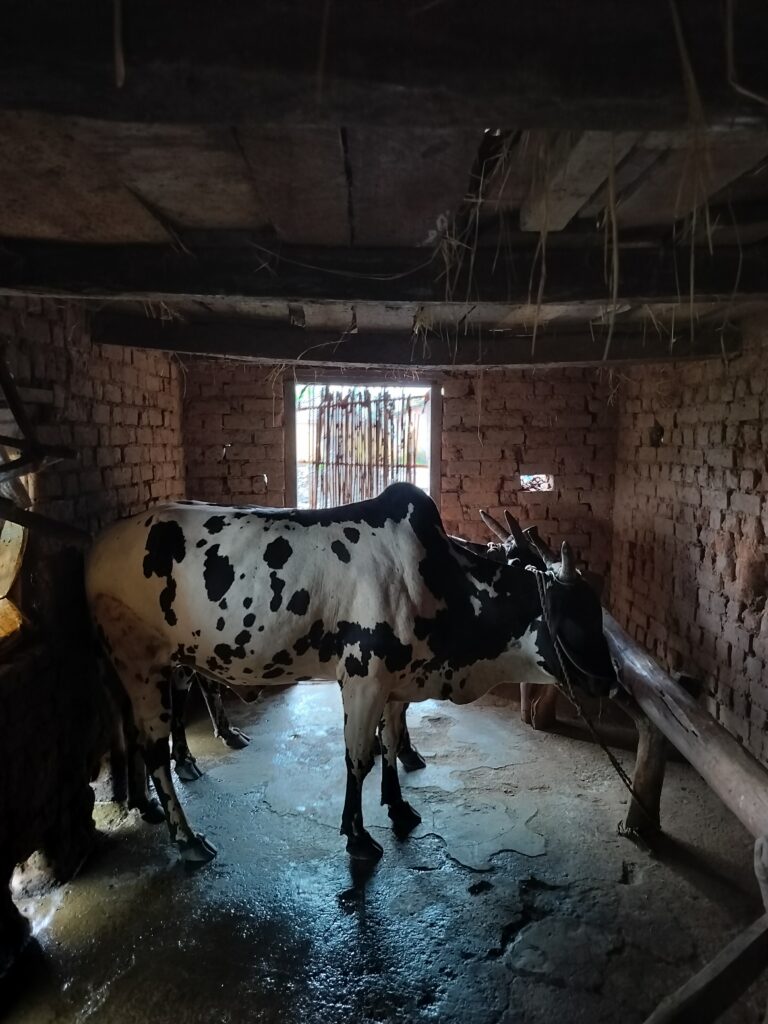
The aroma of the food from Dashrath’s house evoked memories of my village in Konkan. Simple yet appetizing wholesome meal- bhakri, pithla, chatni, dal rice, bhaji, papad & pickle. His wife stood by us to serve the finished items in the thali. Pithla tastes good when served hot, she says. After savouring every bite of this nutritious food we thanked them for their kind hospitality.
Our final walk with Deepak was through the backyard of the Zilla Parishad School towards the Shai River. The Shai River which has its origin in the hills above Dehene meets another river falling from the other side of the Ratangad hills. We stand on the centre of the bridge and behold the Sangam of the two rivers, a confluence, a meeting.
It is believed that when two rivers meet, it becomes even more sacred. Likewise, the experiences in this trip have also been a sangam of nature and people. If Veloshi gave us the solitariness of being one with nature, Dehene connected us with people. There was a confluence of two different thoughts and beliefs between rural and urban.
No words exchanged between us in this final moment. Absolute stillness. To be in one of those sweet spots in nature silences you – standing there in awe, there is nothing to say. The only sound was of the crashing of the waters on the boulders, moving at a flurrying speed. Through our interactions with Deepak, we had developed a kind of symbiosis. When it was time to leave, he bowed, a gesture which was reciprocated by both of us. We knew we would meet again soon.
FOR THE TRAVELLER IN YOU:
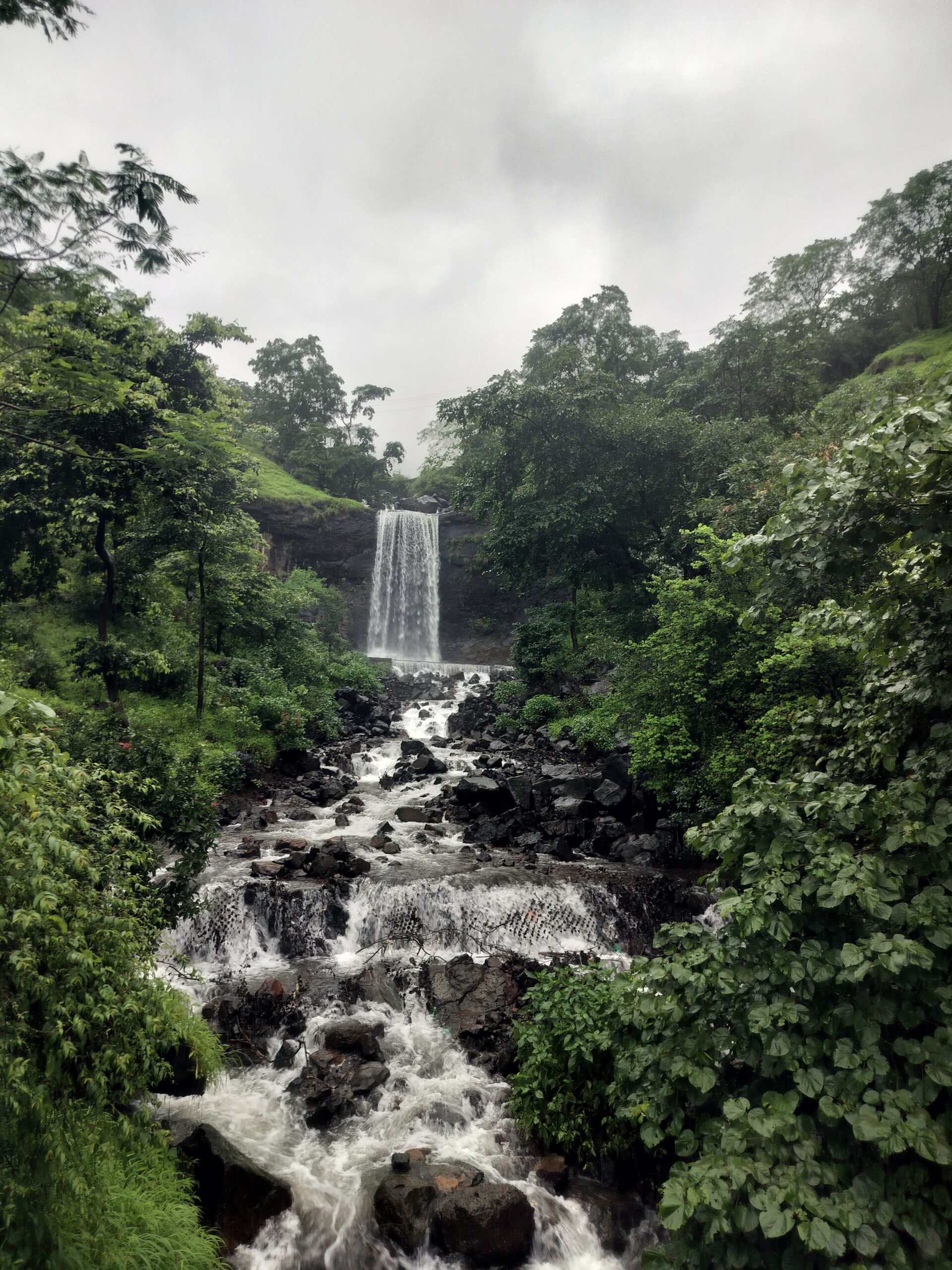
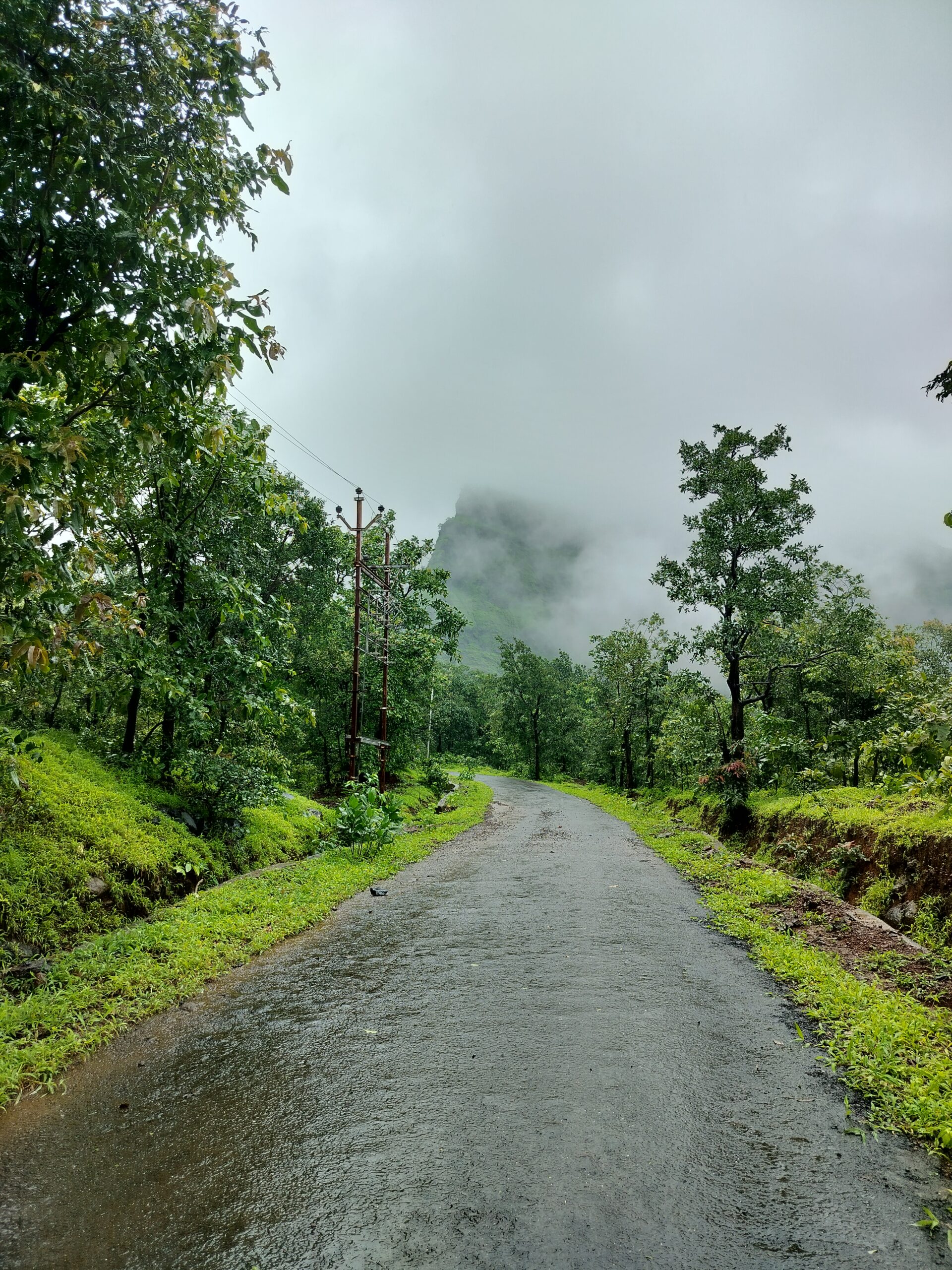
Below two places around Dehene are worth visiting if travelling in monsoon.
GHATGAR DAM (CHONDE) – Built on a hilly region, the Ghatgar Dam is situated on the border of Thane & Ahmednagar district. The lower dam is located near the village of Chonde, just 2 kms from Veloshi. Take a right from Chonde bus stop and keep riding straight till you reach a point where the road splits into two diverging directions. The road going downhill goes towards the dam. On the way, there is a Maruti temple. A waterfall flows adjacent to it. The view of the surrounding forest is magnificent. The dam is less than a kilometre from the temple. The area near the dam has scenic views of waterfalls.

AJOBAGAD HILLS TREK / VALMIKI ASHRAM – Ajobagad trek is not to be missed in monsoon. Take a local guide from Dehene as the second half of the trek is challenging. The first half is till Valmiki Ashram which is also worth a visit if you are short on time for trekking. Guide is not required for a visit to the ashram. Walking takes 60-90 minutes or the uphill road is wide enough to take your vehicle to a certain point from where you walk 10-15 minutes to the ashram. The ashram is a peaceful place to spend some time.

